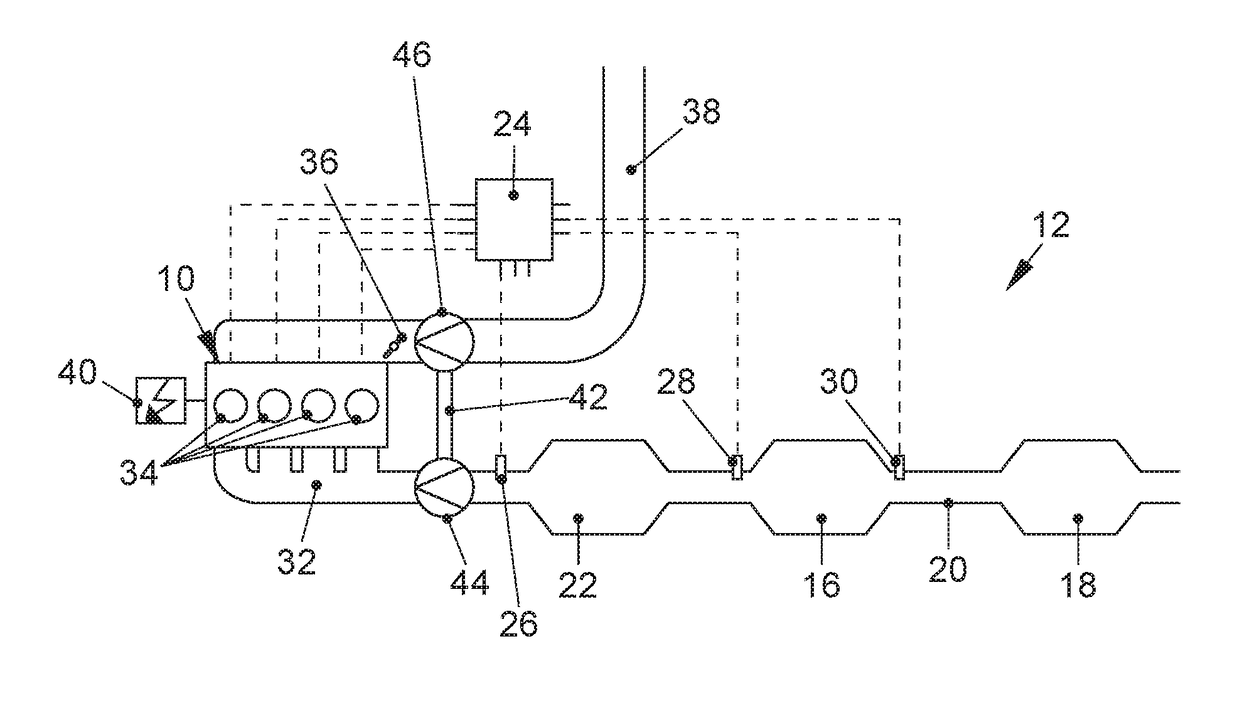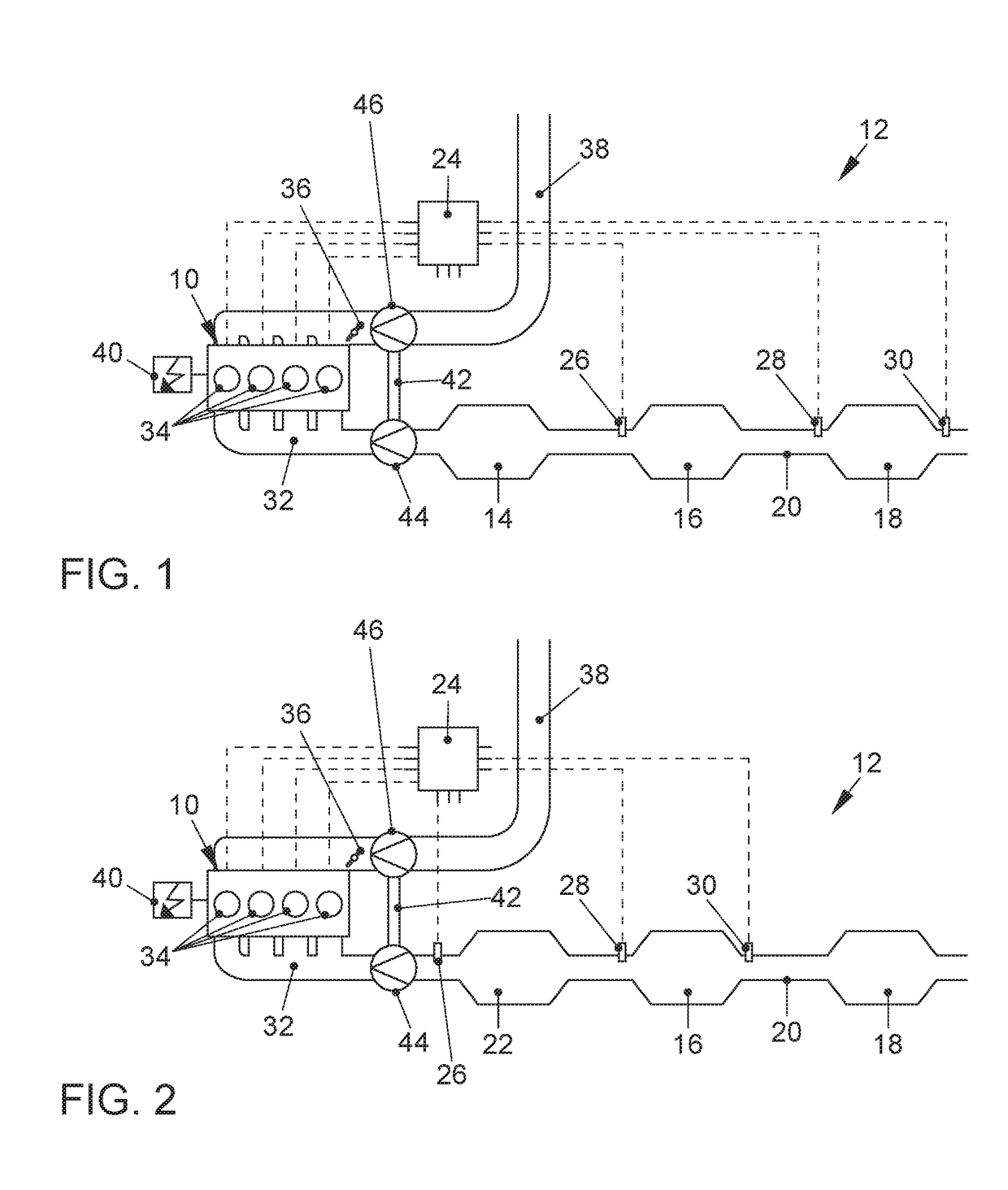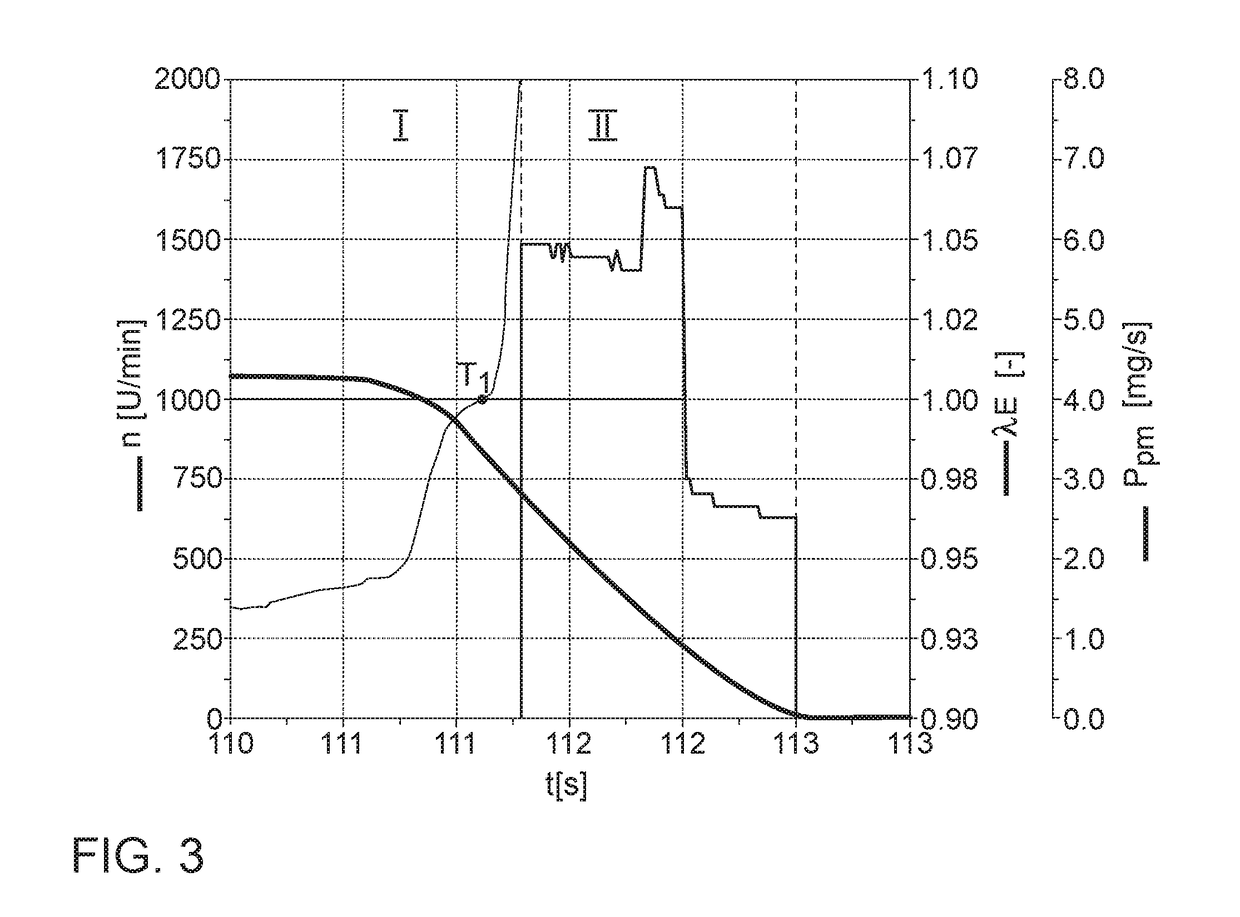Regeneration of a particulate filter or four-way catalytic converter in an exhaust system of an internal combustion engine
a technology of catalytic converter and particulate filter, which is applied in the direction of engine starter, electrical control, exhaust treatment, etc., can solve the problems of increasing the nitrogen oxide emissions in the exhaust gas during the regeneration, the air-fuel ratio of the internal combustion engine to shift towards a lean mixture, and the nitrogen oxide emissions of the exhaust gas to be significant. , to achieve the effect of reducing the emission level and efficient utilization
- Summary
- Abstract
- Description
- Claims
- Application Information
AI Technical Summary
Benefits of technology
Problems solved by technology
Method used
Image
Examples
Embodiment Construction
[0035]FIG. 1 shows a schematic view of an internal combustion engine 10 having an exhaust system 12 connected to an outlet 32 of the internal combustion engine 10. A particulate filter 14 is arranged in the exhaust system 12 near the engine in the flow direction of an exhaust gas of the internal combustion engine 10 through the exhaust system 12. In this context, the term “near the engine” refers to a position in the exhaust system corresponding to a distance of less than 80 cm, preferably less than 50 cm, that the exhaust gas has to travel from the outlet 32 of the internal combustion engine 10. Downstream from the particulate filter 14, especially in the undercarriage of a motor vehicle, there is a three-way catalytic converter 16 and, further downstream, a NOx storage catalytic converter 18, which are connected to each other by an exhaust passage 20 of the exhaust system 12. The amount of fuel injected into the combustion chambers 34 of the internal combustion engine 10 and thus ...
PUM
 Login to View More
Login to View More Abstract
Description
Claims
Application Information
 Login to View More
Login to View More - R&D
- Intellectual Property
- Life Sciences
- Materials
- Tech Scout
- Unparalleled Data Quality
- Higher Quality Content
- 60% Fewer Hallucinations
Browse by: Latest US Patents, China's latest patents, Technical Efficacy Thesaurus, Application Domain, Technology Topic, Popular Technical Reports.
© 2025 PatSnap. All rights reserved.Legal|Privacy policy|Modern Slavery Act Transparency Statement|Sitemap|About US| Contact US: help@patsnap.com



